What Is A Real Estate Mortgage Investment Conduit (Remic)?
Key takeaways:
- A Real Estate Mortgage Investment Conduit (REMIC) is a type of special purpose vehicle used to pool mortgage loans and issue securities backed by those loans.
- A REMIC can be created to limit the taxable income of the mortgage loans and the securities issued. It also provides investors with a way to invest in a diversified pool of mortgage loans.
- The assets that can be included in a REMIC are primarily mortgage loans, but can also include mortgage-backed securities, real estate, and other related assets.
Are you looking to understand the complexities of the real estate mortgage investment conduit (REMIC)? This article will explain everything you need to know about this important investment option. You’ll learn the basics and understand the potential benefits.
Definition of REMIC
A Real Estate Mortgage Investment Conduit (REMIC) is an investment vehicle used in the securitization of mortgages. It is a complex financial instrument that pools several mortgages to form a security. The REMIC then issues bonds that include a portion of both the principal and interest payments on the underlying mortgages. These bonds are then sold to investors to raise funds for the issuer.
In securitization, a REMIC separates the cash flows from the underlying mortgages into different classes, each with unique risks. The cash flows are then allocated according to specific rules set out in the legal documents governing the REMIC. This ensures that investors in each class receive a consistent and predictable return on their investment.
Despite the initial complexity of a REMIC, they have become a popular investment vehicle for those seeking to diversify their portfolio and generate predictable returns. Additionally, REMICs have come under scrutiny for their role in the 2008 financial crisis, where their use contributed to the collapse of the housing market.
A real-life example of a REMIC is the creation of a trust that contained the mortgages of thousands of homeowners, with the mortgages pooled together to form a security. Investors purchased bonds that represented shares in the REMIC and thereby invested in the underlying mortgages. While this helped homeowners get mortgages, the volatility of the housing market, among other issues, led to the collapse of many of these securities.
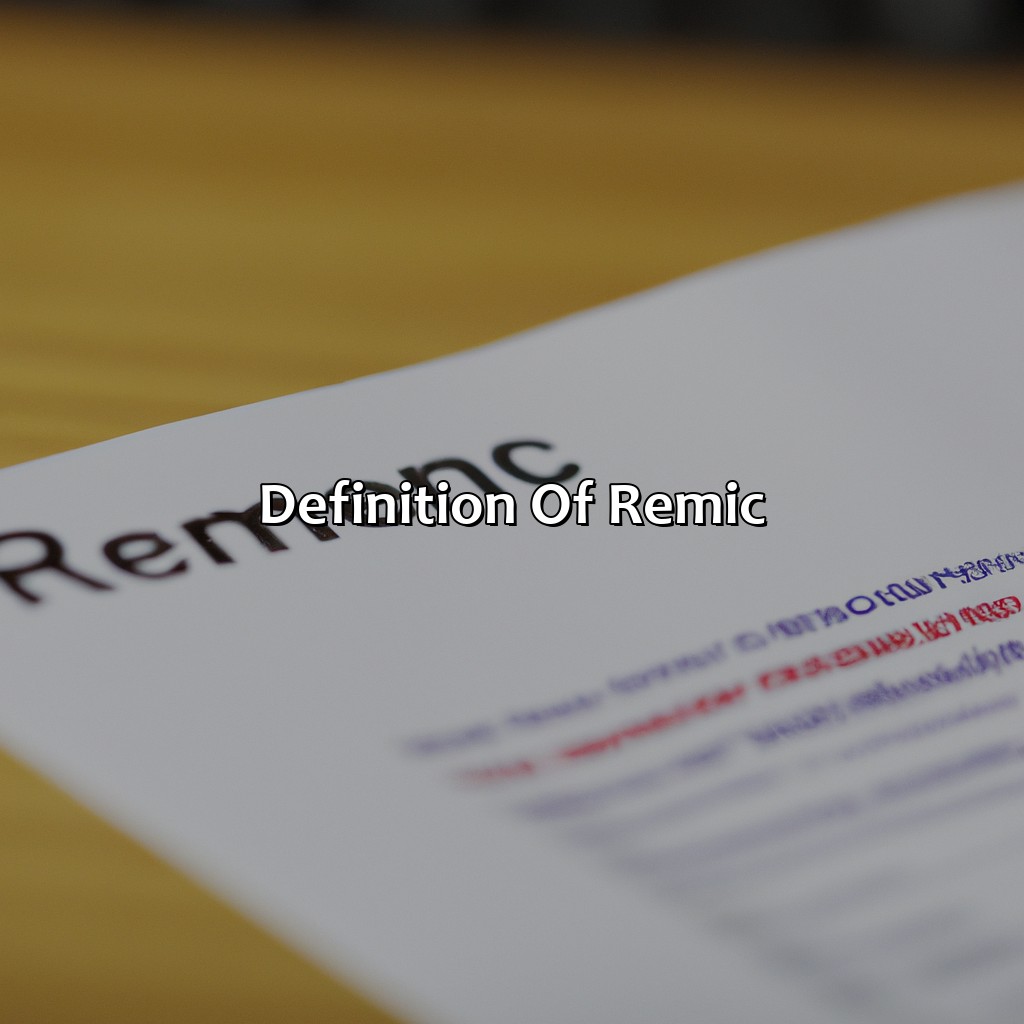
Image credits: retiregenz.com by James Arnold
Creation and Purpose of REMICs
REMICs are structured finance vehicles that allow for the pooling and securitization of mortgages into tradable securities. By doing so, they free up capital for mortgage lenders to reinvest in new loans and provide liquidity to investors. These vehicles were created in the 1980s as part of the Reagan Administration’s efforts to stimulate investment in the housing market.
The primary purpose of REMICs is to reduce the tax burden on holders of securities backed by real estate mortgages. REMICs are created by issuing multiple classes of securities, each with its own set of cash flows, risks, and rewards. The securities are backed by a pool of mortgages, which may vary in terms of size, credit quality, and interest rates. The purpose of this structure is to pool together a large number of mortgages that would be difficult to sell individually.
One unique feature of REMICs is the use of pass-through taxation. This means that the income generated by the mortgages in the pool is passed through to the investors in the form of interest payments, and the investors are responsible for paying taxes on that income.
It’s important to note that REMICs played a significant role in the 2008 financial crisis. Many of the mortgage-backed securities created in the years leading up to the crisis were poorly underwritten. When homeowners began defaulting on their mortgages, the value of these securities plummeted. The resulting losses had a cascading effect throughout the financial system, ultimately leading to a global economic downturn.
In a similar vein, a friend of mine invested heavily in REMICs prior to the crisis and ended up losing a significant portion of his retirement savings when the market collapsed. While these investment vehicles can offer attractive returns, it’s important for investors to be aware of the risks involved and to carefully evaluate the underlying assets.

Image credits: retiregenz.com by Adam Arnold
Types of Assets that can be included in a REMIC
In a Real Estate Mortgage Investment Conduit (REMIC), a variety of assets can be included. These assets are appropriately selected to reduce risks and boost returns for investors. Here’s a breakdown of the different types of assets that can be included in a REMIC:
| Asset Type | Description |
|---|---|
| Mortgage Loans | A portfolio of residential or commercial mortgage loans. |
| Mortgage-Backed Securities | Mortgage loans that have been securitized and sold to investors in chunks. |
| Real Estate | Ownership of a physical property, such as land or buildings, as an investment. |
| Cash Reserves | Cash that acts as a liquidity cushion to pay for unexpected expenses. |
| Derivative Contracts | Financial instruments that derive their value from an underlying asset, such as interest rate swaps or credit default swaps. |
It’s important to note that the specific assets chosen for inclusion will depend on the goals and investment strategy of the REMIC. While some may focus on high-quality mortgages, others may prioritize higher yields with slightly more risk.
One thing to keep in mind is that REMICs are typically only available to institutional investors due to their complexity and high minimum investment requirements. However, for those who are eligible, investing in a REMIC can provide attractive diversification opportunities and potentially higher returns compared to other fixed income investments.
Don’t miss out on the potential benefits of a REMIC investment. Consult with a financial advisor to see if it’s a suitable option for your portfolio.
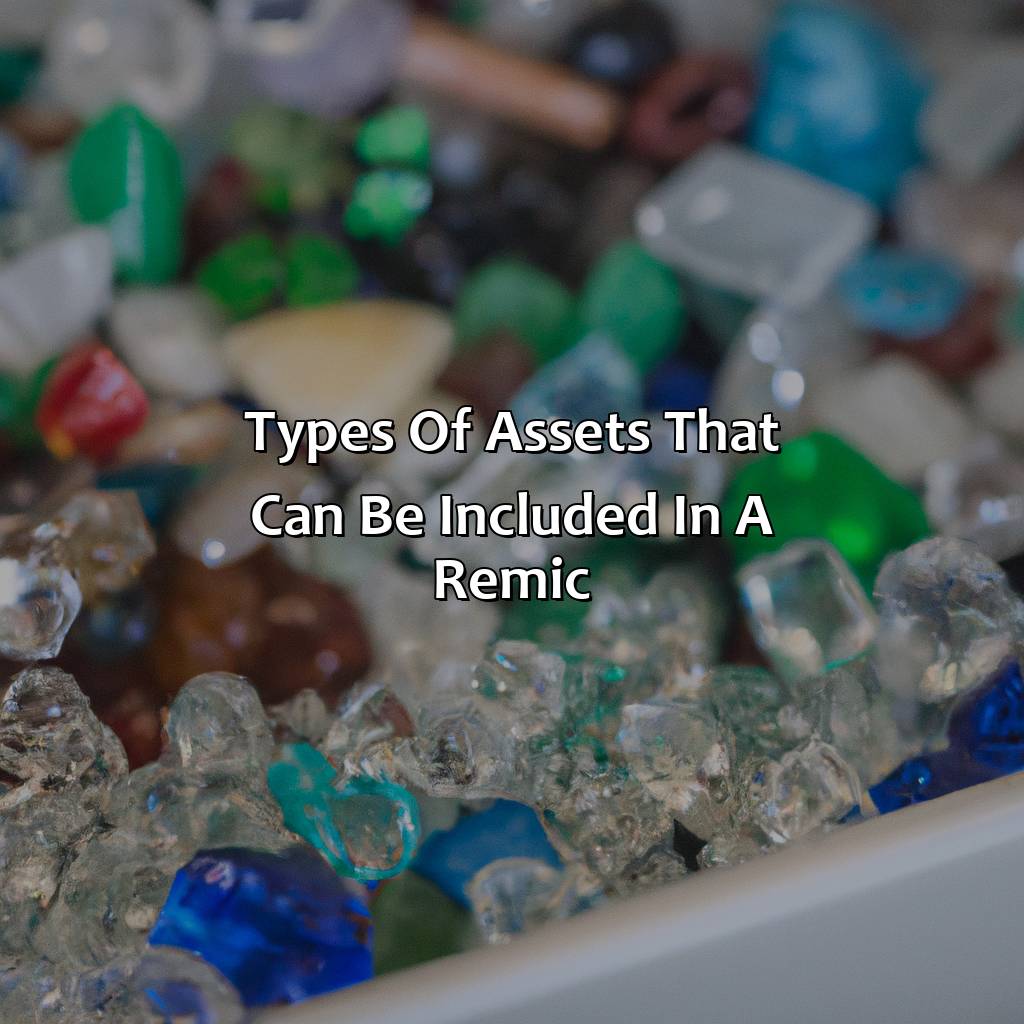
Image credits: retiregenz.com by James Jones
Taxation and Structure of REMICs
The Taxation and Structure of REMICs dictate how these investment vehicles are governed. They are structured as a type of mortgage-backed security that allows for tax advantages for the investors.
| Aspect | Description |
|---|---|
| Purpose | Used for mortgage-backed securities |
| Structure | Multiple layers of security interests and exchanges |
| Taxation Benefits | Pass-through tax status; income not taxed at the corporate level |
| Assets | Primarily mortgages, but can include other real estate assets such as rental payment streams or interests in mineral rights |
REMICs must adhere to strict tax rules, such as the 90/10 rule that requires 90% of the income be passed through to investors. Additionally, any late payments on mortgages must be dealt with according to specific guidelines to remain compliant with REMIC regulations.
A real estate developer used a REMIC to finance a large commercial property project. The REMIC offered tax advantages for the developer and allowed for a diverse pool of investors to participate, making the project financially viable. The success of the project was in part due to the efficient and structured REMIC financing.
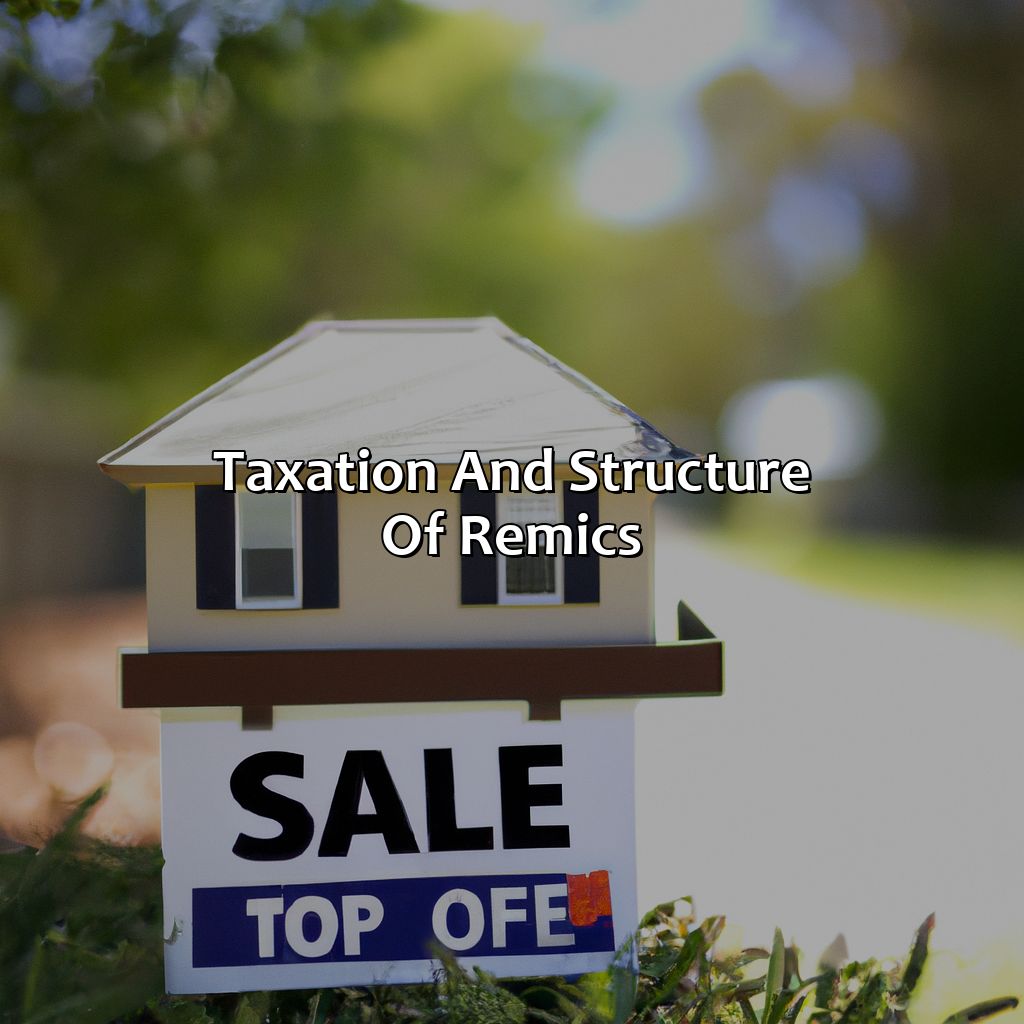
Image credits: retiregenz.com by Yuval Jones
Benefits of Investing in REMICs
Real Estate Mortgage Investment Conduits (REMICs) offer several fruitful opportunities for potential investors. These include:
- Diversification: Investing in REMICs allows investors to diversify their portfolio with low-risk, high-yield investments. REMICs pool together several mortgages to provide a diversified portfolio of securities that cater to every risk appetite.
- Regular Income: REMICs can generate steady income streams for investors. Mortgage payments received from borrowers of residential and commercial real estate properties are used to pay investors at regular intervals.
- Capital Preservation: REMICs offer investors capital preservation opportunities by investing in AAA-rated securities. They mitigate risks by opting for high-quality securities that offer minimal default risks.
- Tax Benefits: REMICs are structured pass-through entities which provide tax benefits to investors. They can enjoy lower tax rates and deductions on their investment income depending on individual taxable income.
- Liquidity: REMICs offer investors a level of liquidity. These securities are tradable in the secondary market, enabling investors to buy or sell securities as and when required.
Investing in REMICs typically requires a considerable investment upfront. However, several risks such as mortgage defaults and interest rate fluctuations can have an impact on the returns. Therefore, potential investors must carry out due diligence before investing.
A unique fact about REMICs is that these securities came into existence in the 1980s in response to the changing tax laws under the Reagan administration. REMICs allowed the mortgage industry to securitize mortgages and subsequently offer more financing opportunities to the public. (Source: Investopedia)
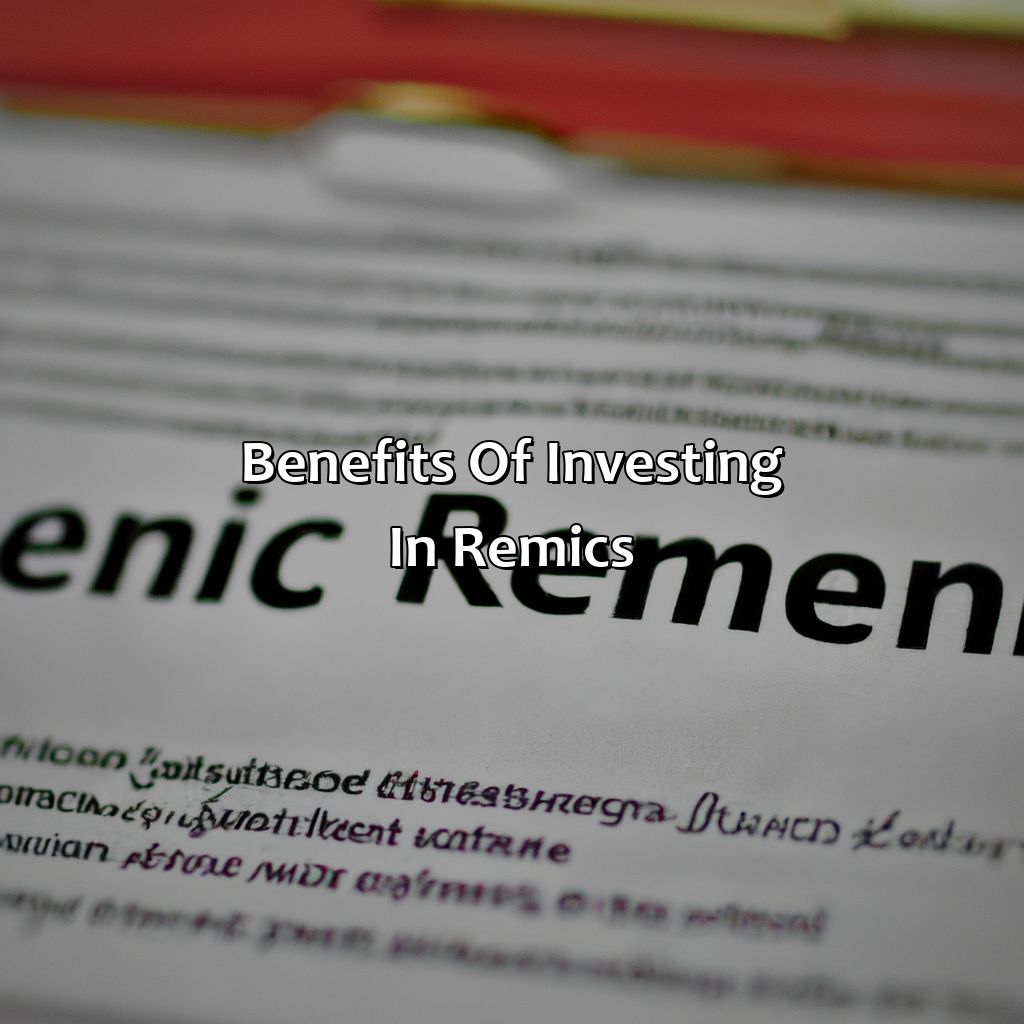
Image credits: retiregenz.com by David Washington
Risks and Considerations in REMIC Investing
REMICA’s carry unique and complex risks for investors to understand. The underlying mortgages are subject to credit risks, prepayment risks, interest rate risks, market risks, and regulatory risks. The complexity of REMICA’s can also lead to execution risks, which can have a significant impact on returns. Additionally, investors should be mindful of taxes and their impact on REMIC investments.
It is essential for investors to conduct thorough due diligence to fully understand the underlying assets and the specific structure of the REMIC. In particular, investors should examine the quality of the underlying mortgage assets and their historical performance, as well as the credit rating of the REMIC.
Pro Tip: Work closely with a qualified financial advisor who specializes in REMIC investments to help navigate the complexities and risks associated with these investments.
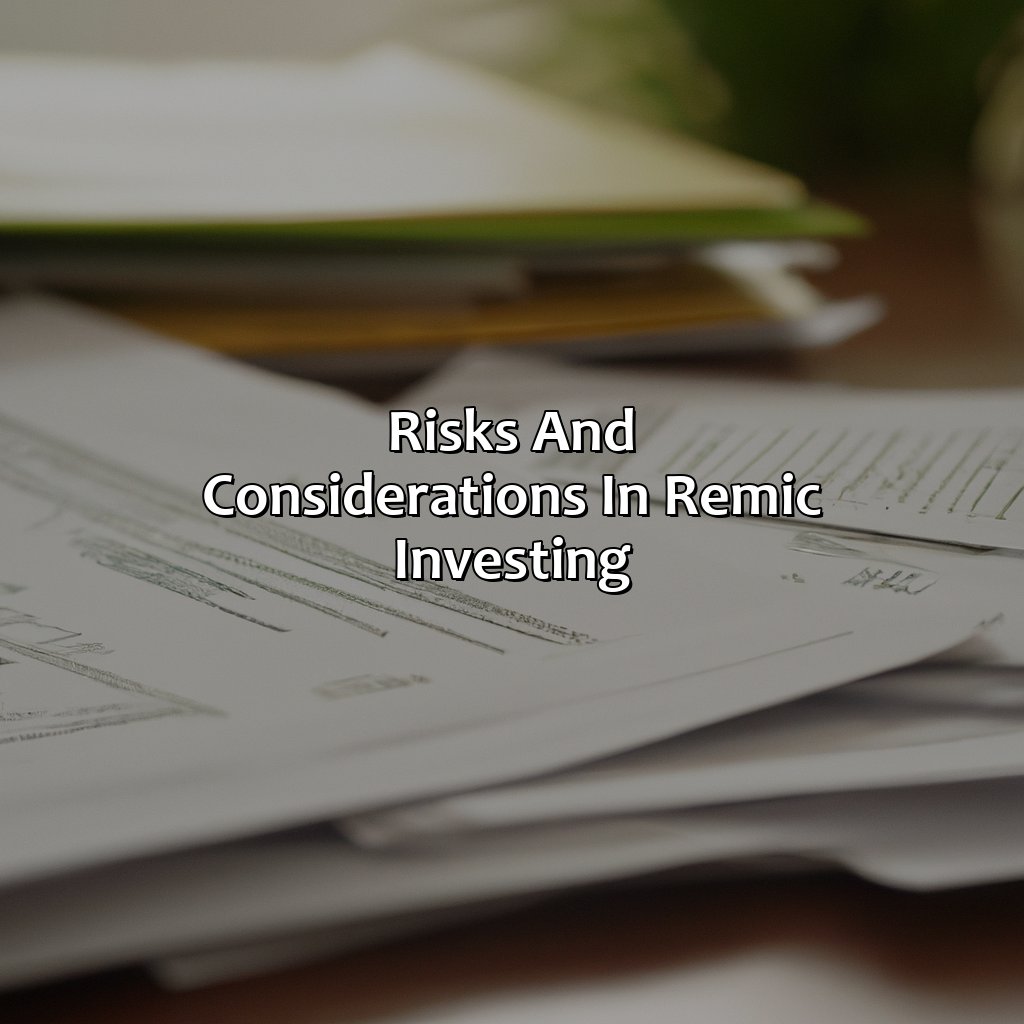
Image credits: retiregenz.com by Joel Jones
Five Facts About Real Estate Mortgage Investment Conduits (REMICs):
- ✅ REMICs are investment vehicles used for pooling and selling mortgages as securities. (Source: Investopedia)
- ✅ REMICs are created by dividing a pool of mortgages into smaller pieces called tranches, which are then sold to investors. (Source: The Balance)
- ✅ The income generated from the mortgage payments is distributed among the investors based on the tranche they own. (Source: Nolo)
- ✅ REMICs are typically used by banks, insurance companies, and other large institutional investors to manage their mortgage portfolios. (Source: Bankrate)
- ✅ REMICs must comply with strict IRS regulations in order to qualify as tax-exempt entities. (Source: IRS)
FAQs about What Is A Real Estate Mortgage Investment Conduit (Remic)?
What is a Real Estate Mortgage Investment Conduit (REMIC)?
A Real Estate Mortgage Investment Conduit (REMIC) is basically a complex entity created to hold a pool of mortgage loans and then issue various classes of interests that are backed by those mortgage loans.
What are the benefits of investing in a REMIC?
Investing in a REMIC brings significant benefits and advantages, such as diversifying your investment portfolio, generating a stable cash flow, and reducing the risks associated with investing in individual mortgage loans.
How does a REMIC work?
A typical REMIC structure involves setting up a trust that holds the mortgage loans and the class of interests that are created from those loans. Investors then purchase these classes of interests in exchange for a share of the trust’s cash flows generated by the underlying mortgage loans.
What are the different classes of interests in a REMIC?
There are typically several classes of interests in a REMIC, each with its own share of the cash flows generated by the underlying mortgage loans. These classes can be structured according to different levels of credit risk, duration, and interest rate sensitivity.
What are the tax implications of investing in a REMIC?
The tax implications of investing in a REMIC depend on the type of interest purchased and the investor’s tax status. Typically, interest income from a REMIC is taxed as ordinary income, but certain classes of interests may qualify for more favorable tax treatment.
How can I invest in a REMIC?
Investing in a REMIC usually requires significant capital, and the minimum investment threshold can vary depending on the type of interest purchased. Interested investors can consult with their financial advisors or directly contact REMIC issuers or investment firms to inquire about available investment opportunities.
